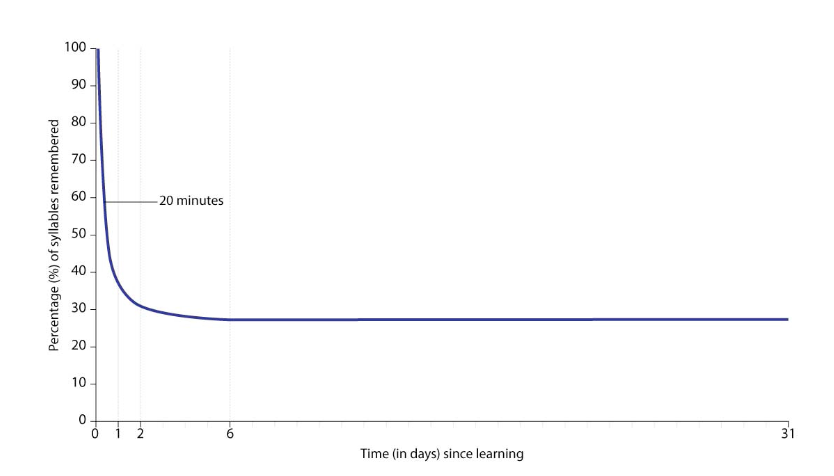Forgetting Curve
Learned in PSYCH101.
Origin
Hermann Ebbinghaus, using himself as his only subject, conducted early research on memory using lists of 30 meaningless syllables like WID and ZOF. He would study these lists until he could recite each syllable without committing an error by memory alone. Then he would try to recall as much of the list as possible after waiting different intervals of time in order to measure the rate at which information is lost from memory.
The result is called a Forgetting Curve. Ebbinghaus discovered that most information loss occurs relatively quickly. Afterwards, further forgetting occurs at a much slower rate.

- At 20 minutes, Ebbinghaus could only recall about 60% of the nonsense syllables, a loss of approximately 40% of the information. Decay of information continued as time passed but the rate of loss decreased. For example, between 2 days and one month, recall only decreased by a further 5%.